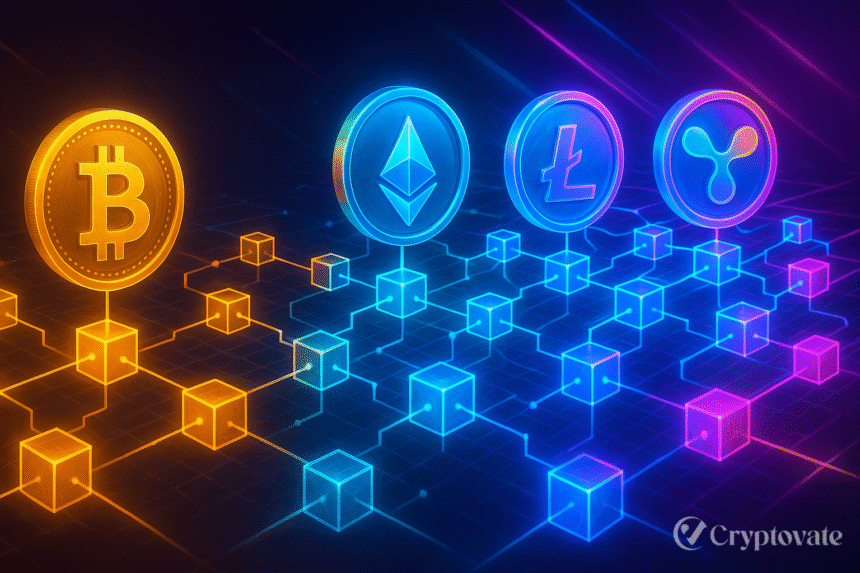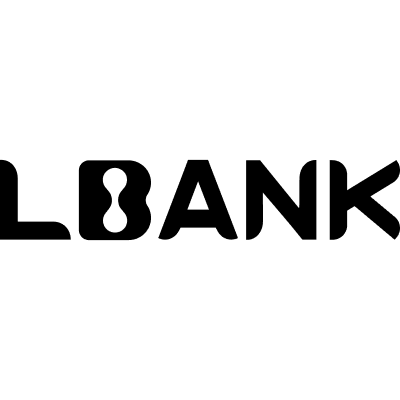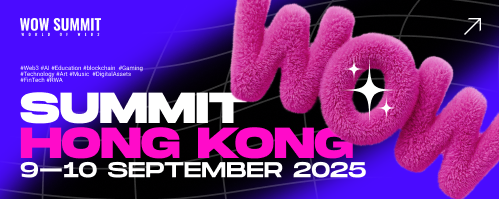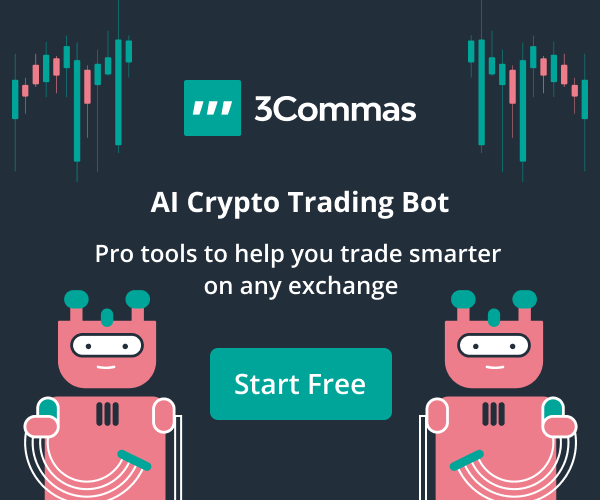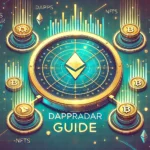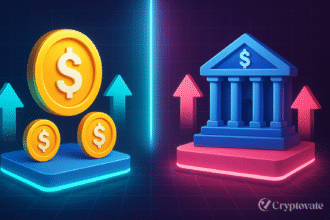– Ad –
| Getting your Trinity Audio player ready... |
Blockchain technology has reshaped the digital landscape, evolving from a novel idea into the foundation of a decentralized, user-driven internet. Launched with Bitcoin in 2009, blockchain has grown through Ethereum’s smart contracts and now powers Web3’s vision of a democratized online world. By 2025, it underpins decentralized finance (DeFi), non-fungible tokens (NFTs), GameFi, and the metaverse, with global crypto adoption projected to reach 1 billion users by 2030, according to industry reports. This article explores blockchain’s transformative journey, key milestones, and their impact on today’s ecosystem, offering a clear, comprehensive guide for beginners and seasoned users alike. Spanning technical innovations, practical applications, and future trends, it highlights how blockchain continues to redefine finance, gaming, and digital ownership.
- The Genesis: Bitcoin and the First Blockchain
- Ethereum: Smart Contracts and New Possibilities
- The Rise of Alternative Blockchains
- Web3: A User-Owned Internet
- Blockchain in the Metaverse
- Emerging Technologies: Zero-Knowledge Proofs and Interoperability
- Challenges in Blockchain’s Journey
- The Future of Blockchain
- FAQs
The Genesis: Bitcoin and the First Blockchain
In 2009, an anonymous figure, Satoshi Nakamoto, introduced Bitcoin, the world’s first cryptocurrency, built on a groundbreaking technology called blockchain. This decentralized ledger records transactions across a network of computers, ensuring transparency and security without intermediaries like banks. Bitcoin’s blockchain solved the double-spending problem—preventing digital currency from being spent twice—through a consensus mechanism called Proof of Work (PoW). Miners compete to solve complex mathematical puzzles, validating transactions and earning rewards in Bitcoin.
Bitcoin’s impact was profound. It created a trustless financial system where peers could transact directly, bypassing centralized institutions. By 2021, Bitcoin’s market cap exceeded $1 trillion, solidifying its status as a digital store of value. Its blockchain’s immutability and transparency laid the groundwork for all future crypto innovations, from DeFi lending platforms to NFT marketplaces. In 2025, Bitcoin remains a cornerstone, proving blockchain’s potential to challenge traditional finance and inspire a decentralized revolution.
Ethereum: Smart Contracts and New Possibilities
In 2015, Vitalik Buterin launched Ethereum, expanding blockchain’s scope far beyond currency. Ethereum introduced smart contracts—self-executing agreements coded on the blockchain that automatically execute when conditions are met. For example, a smart contract could release funds to a seller once a buyer confirms delivery, all without a middleman. This innovation enabled decentralized applications (dApps), powering the rise of DeFi platforms like Uniswap, where users trade tokens peer-to-peer, and NFT collections like CryptoPunks, which pioneered digital art ownership.
Ethereum’s flexibility fueled a DeFi boom, with billions locked in protocols by 2021. It also birthed the NFT market, enabling creators to tokenize art, music, and virtual assets. However, Ethereum’s PoW model led to high energy consumption and transaction fees (gas), prompting a 2022 shift to Proof of Stake (PoS). This upgrade slashed energy use by 99.95% and improved scalability, though high fees persist. In 2025, Ethereum remains the dominant platform for DeFi and NFTs, hosting most dApps and shaping Web3’s foundation, despite competition from newer blockchains.
The Rise of Alternative Blockchains
Ethereum’s limitations—slow transactions and costly fees—sparked a wave of alternative Layer 1 blockchains designed for speed, affordability, and specialization. Solana, launched in 2020, achieves up to 50,000 transactions per second (TPS), making it ideal for fast-paced GameFi projects like Star Atlas. Polkadot, with its interoperable parachain system, connects multiple blockchains, enabling seamless data and asset transfers. Cardano prioritizes sustainability and research-driven development, appealing to eco-conscious users. BNB Chain, formerly Binance Smart Chain, provides cost-effective transactions, supporting DeFi platforms like PancakeSwap.
Layer 2 solutions, built atop Ethereum, further address scalability. Polygon provides fast, cheap transactions for NFT minting, while Arbitrum optimizes DeFi with lower gas fees. These alternatives diversify the ecosystem, catering to specific needs: Solana for gaming, Polygon for NFTs, and Polkadot for cross-chain collaboration. In 2025, they drive Web3’s growth by making blockchain accessible to broader audiences, from gamers to developers, while reducing barriers like high costs.
Web3: A User-Owned Internet
Web3, often called the decentralized internet, marks blockchain’s latest evolution. Unlike Web1’s static pages or Web2’s centralized platforms controlled by tech giants, Web3 empowers users with ownership and control. Crypto wallets like MetaMask act as digital identities, letting users manage tokens, NFTs, and dApps. Decentralized platforms like Lens Protocol enable user-owned social networks, while Filecoin offers decentralized storage, challenging services like Google Drive. By 2024, Web3’s market size reached $25 billion, with dApps growing 50% annually, per industry data.
Web3’s impact spans industries. In gaming, players own in-game assets as NFTs, tradeable across platforms like The Sandbox. In finance, DeFi protocols like Aave let users lend or borrow without banks. In social media, Web3 ensures creators retain data control and monetization rights. In 2025, Web3 is redefining digital interactions, shifting power from corporations to individuals and fostering a transparent, user-centric ecosystem.
Blockchain in the Metaverse
The metaverse, a virtual shared space, relies heavily on blockchain to function. Projected to reach $800 billion by 2028, according to market forecasts, the metaverse uses NFTs to represent virtual assets, like land in Decentraland or skins in Axie Infinity. Blockchain ensures provable ownership and secure transactions, while DeFi enables in-game economies, such as lending tokens for virtual purchases. Projects like The Sandbox and Illuvium showcase how blockchain creates immersive, player-driven worlds where assets have real-world value.
In 2025, the metaverse is a key driver of blockchain adoption. Virtual events, like concerts in Decentraland, and play-to-earn (P2E) games attract millions. Blockchain’s transparency prevents fraud, ensuring players trust the system. As metaverse platforms grow, they integrate with Web3, creating seamless experiences where users move assets between games, social platforms, and DeFi protocols, all secured by blockchain.
Emerging Technologies: Zero-Knowledge Proofs and Interoperability
Blockchain’s evolution continues with cutting-edge advancements. Zero-knowledge proofs (ZKPs), used in blockchains like Zcash and Ethereum’s zk-Rollups, enable private, scalable transactions. For example, zkSync allows users to verify transactions without revealing sensitive data, enhancing DeFi privacy and reducing fees. Interoperability protocols like Polkadot and Cosmos connect blockchains, enabling assets to move between Ethereum, Solana, and others via bridges like Wormhole. These technologies make Web3 more efficient and user-friendly.
In 2025, ZKPs are critical for privacy-focused applications, like secure NFT trading, while interoperability fosters a unified ecosystem. For instance, a player can use an NFT earned in a Solana-based game on an Ethereum-based marketplace, streamlining Web3 interactions. These advancements tackle scalability and privacy issues, enabling widespread adoption.
Also Read: The Future Unveiled: Exploring the Top 10 Revolutionary Blockchain Technologies
Challenges in Blockchain’s Journey
Despite its progress, blockchain faces hurdles:
- Scalability: High fees and slow speeds persist, though Layer 2 solutions like Arbitrum mitigate this.
- Energy Concerns: PoW’s environmental impact led to PoS adoption, but public perception remains a challenge.
- Regulation: Evolving global laws, especially around DeFi and NFTs, create uncertainty.
- Security: Scams like rug pulls and phishing require users to verify smart contracts with tools like CertiK and secure wallets with 2FA.
Solutions include adopting scalable networks, educating users, and fostering transparent governance through decentralized autonomous organizations (DAOs), like those in MakerDAO, which empower community-driven decisions.
The Future of Blockchain
Blockchain’s journey from Bitcoin’s financial experiment to Web3’s decentralized internet signals a paradigm shift. By 2030, interoperability and ZKPs will likely create a seamless, private Web3 ecosystem. Developers are building user-friendly interfaces, like mobile-first dApps, to onboard non-technical users. Projects integrating AI, such as AI-driven DeFi analytics or NFT creation, are emerging, further expanding blockchain’s reach.
For users, this means more accessible DeFi platforms, immersive GameFi experiences, and secure NFT markets. Developers must prioritize sustainability, transparency, and inclusivity to drive adoption. Blockchain’s potential to reshape finance, gaming, and digital ownership is vast, but overcoming technical and regulatory challenges will be key to its long-term success.
Next Steps: Download a MetaMask wallet, explore dApps like Uniswap or The Sandbox, and research projects on blockchain explorers to dive into Web3.
FAQs
How does Bitcoin’s blockchain differ from Web3?
Bitcoin’s blockchain enables decentralized currency, while Web3 uses blockchain for a user-owned internet, supporting dApps, NFTs, and DeFi.
What are smart contracts, and why are they important?
Smart contracts are automated agreements on blockchains like Ethereum, executing actions (e.g., DeFi lending) when conditions are met, enabling trustless apps.
Why do alternative blockchains matter for Web3?
Blockchains like Solana and Polygon offer faster, cheaper transactions, supporting scalable GameFi, DeFi, and NFT applications in Web3.
How can I safely join the Web3 ecosystem?
Use a secure wallet like MetaMask, verify projects with blockchain explorers, and start with trusted dApps like OpenSea or Decentraland.


